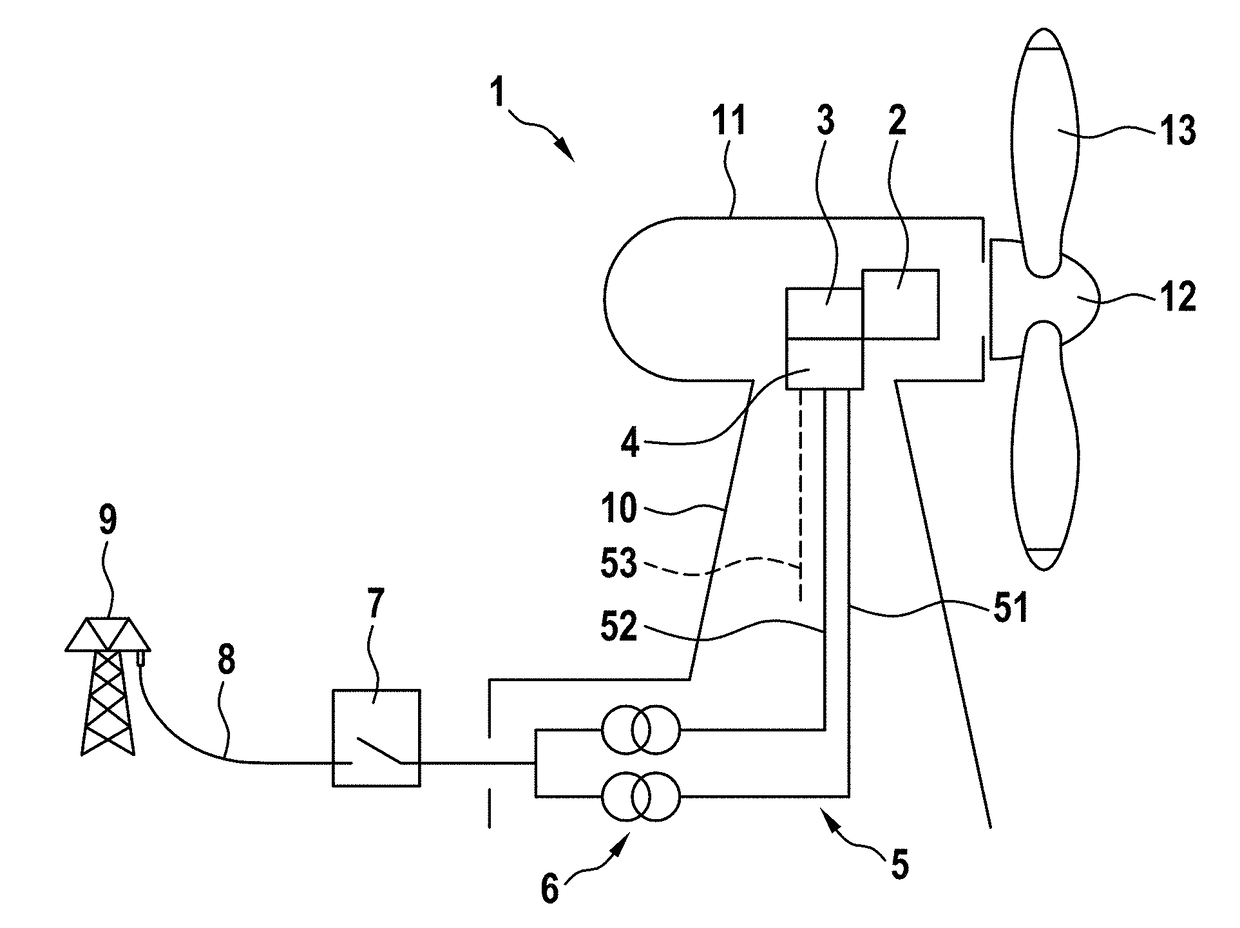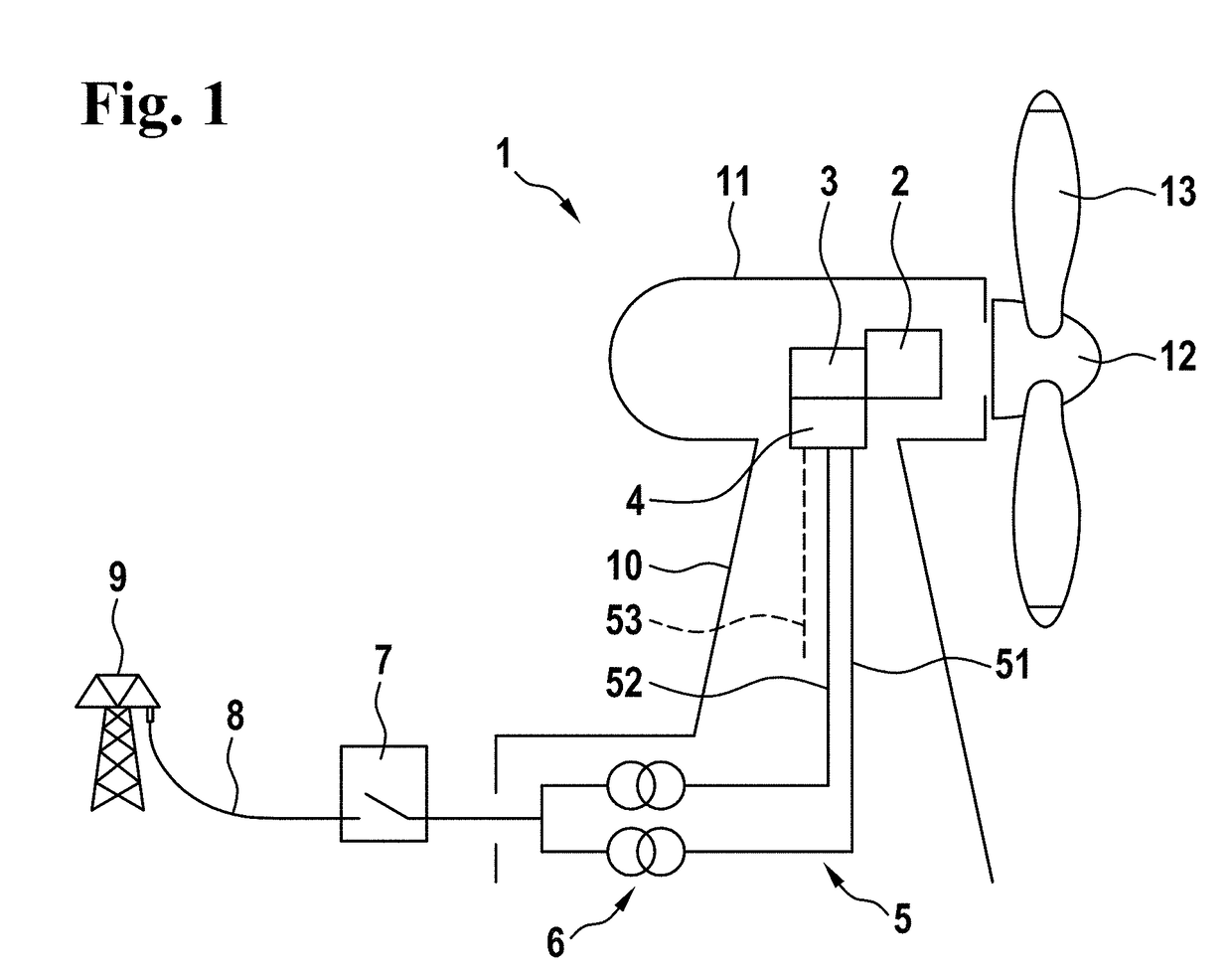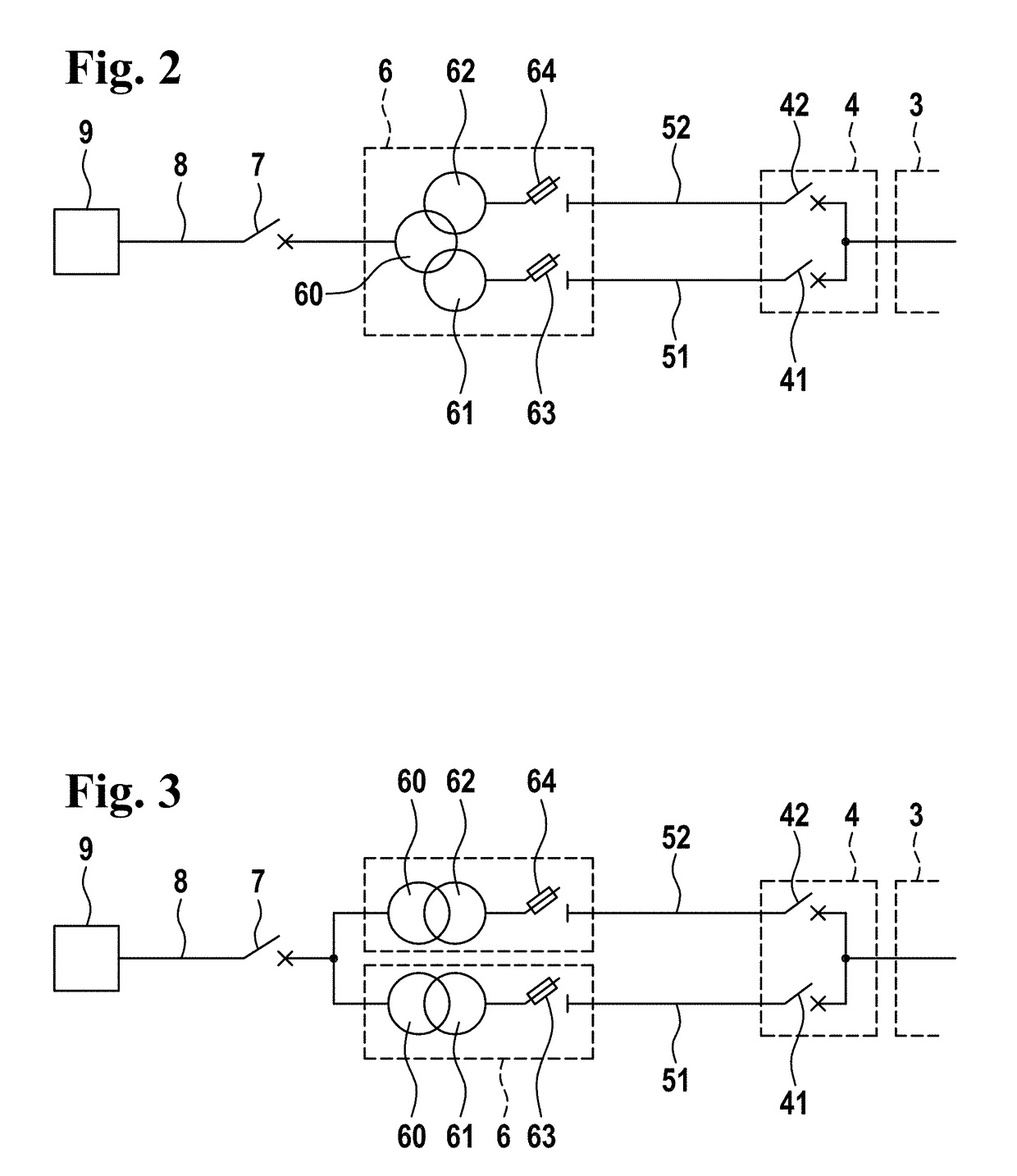Wind turbine with feed line
a technology of wind turbines and feed lines, which is applied in the direction of electric generator control, machines/engines, mechanical equipment, etc., can solve the problems of high currents of circuit breakers on the low-voltage side of turbine transformers, impracticality, and expensive special designs for circuit breakers, so as to increase the impedance of transformers and reduce the cost of configuration
- Summary
- Abstract
- Description
- Claims
- Application Information
AI Technical Summary
Benefits of technology
Problems solved by technology
Method used
Image
Examples
Embodiment Construction
[0022]A wind turbine according to one exemplary embodiment of the present invention, which is referred to in its entirety by the reference numeral 1, comprises a nacelle 11 which is pivotably arranged on the upper end of a tower, on the front side of which a wind rotor 12 having multiple rotor blades 13 is rotatably arranged. Via a rotor shaft (not depicted), the wind rotor 12 drives a generator 2 which converts the mechanical power supplied by the wind rotor 12 into electric power and outputs it via a converter 3. At the output of the converter 3, a power circuit breaker unit 4 is arranged which, in the depicted exemplary embodiment, comprises a first power circuit breaker 41 and a second power circuit breaker 42. From there, the electric power is supplied at a low-voltage level via feed lines 5 to a turbine transformer 6. The turbine transformer 6 is designed to raise the electric power supplied at the low-voltage level to a medium-voltage level and to output it via a medium-volta...
PUM
 Login to View More
Login to View More Abstract
Description
Claims
Application Information
 Login to View More
Login to View More - R&D
- Intellectual Property
- Life Sciences
- Materials
- Tech Scout
- Unparalleled Data Quality
- Higher Quality Content
- 60% Fewer Hallucinations
Browse by: Latest US Patents, China's latest patents, Technical Efficacy Thesaurus, Application Domain, Technology Topic, Popular Technical Reports.
© 2025 PatSnap. All rights reserved.Legal|Privacy policy|Modern Slavery Act Transparency Statement|Sitemap|About US| Contact US: help@patsnap.com



